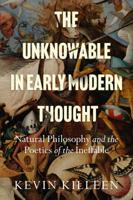Publisher's Synopsis
Excerpt from Notes, Explanatory and Practical, on the Epistles of Paul to the Ephesians, Philippians, and Colossians
Whatever was the relation which he sustained to the church in Ephe sus, it is agreed on all hands that John the apostle spent there a consider able portion of his life. At what time he went to Ephesus, or why he did it, is not now known. The common opinion is, that he remained at or near Jerusalem for some fifteen years after the crucifixion of the Lord Jesus, during which time he had the special charge of Mary the mother of the Saviour; that he then preached the gospel to the Parthians and the Indians, and that he then returned and went to Ephesus, in or near which he spent his latter days, and in which, at a very advanced age, he died. It was from Ephesus that, under the Emperor Domitian, A. D. 95, he was banished to the island of Patmos, from which he returned A. D. 97, on the accession of Nerva to the crown, who recalled all who had been banished. John is supposed at that time to have been about ninety years of age. He is said to have died at Ephesus in the third year of Trajan, A. D. 100, aged about ninety-four years. For a full and interesting biography of the Apostle John, the reader may consult the Lives of the Apostles, by David Francis Bacon, pp. 307 - 376.
Of the subsequent history of the church at Ephesus, little is known, and it would not be necessary to dwell upon it in order to an exposition of the epistle before us. It is sufficient to remark, ' that the candlestick is removed out of its place, (rev. Ii. And that all the splendour of the temple of Diana, all the pomp of her worship, and all the glory of the Christian church there, have alike faded away.
About the Publisher
Forgotten Books publishes hundreds of thousands of rare and classic books. Find more at www.forgottenbooks.com
This book is a reproduction of an important historical work. Forgotten Books uses state-of-the-art technology to digitally reconstruct the work, preserving the original format whilst repairing imperfections present in the aged copy. In rare cases, an imperfection in the original, such as a blemish or missing page, may be replicated in our edition. We do, however, repair the vast majority of imperfections successfully; any imperfections that remain are intentionally left to preserve the state of such historical works.








